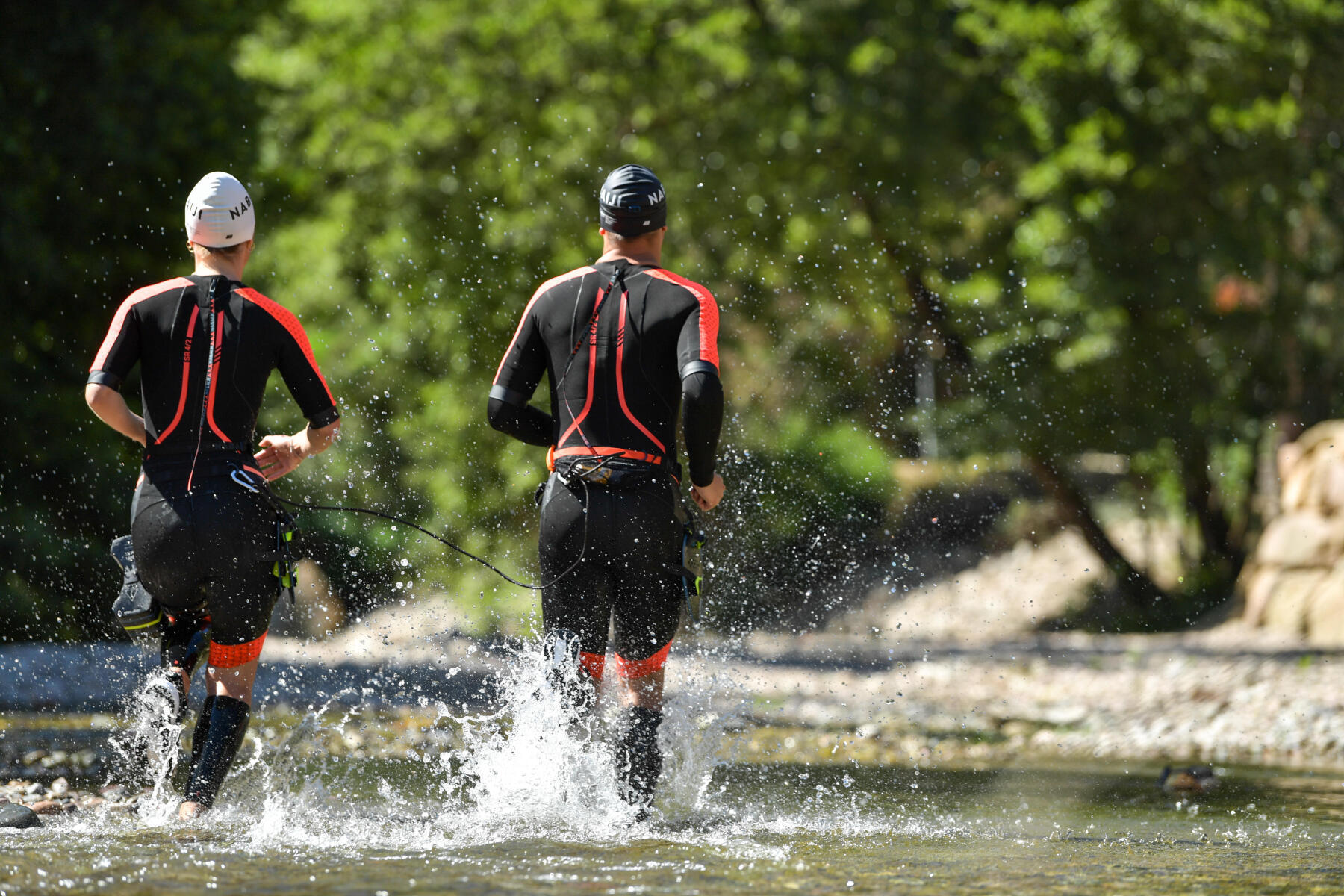Swimrun: what is it?
Created in 2002 in Sweden, swimrun is the result of a bet between three friends. What was the original challenge? To reach a series of islands independently and as quickly as possible. The challenge consisted of a race between the islands, in which the competitors alternately ran and swam.
Four years later, in 2006,and still in Sweden, this crazy wager between our Swedish friends became a genuine discipline with the organisation of the first swimrun race, called the "Ö till ö" (or island to island). In the meantime, this race has become the world championship.
This discipline is particular for three reasons: the operational dimension of the competitors, the natural setting and racing in pairs. Unlike a triathlon or an aquathlon, there are always alternate swimming and running stages in a swimrun. The competitors are not allowed to change clothes in the transitions between the swimming and running stages. Therefore, they need all the gear that is necessary for running and swimming in order to make the transitions between the stages of the race. Another difference between swimruns and triathlons or aquathlons, is that competitors take part in swimruns in pairs. In fact, the members of a pair are tied together by a tow line.
Every swimrun is different. The organisers decide on the format of each race. This discipline demands a high degree of adaptation to the course. Swimruns take place in natural settings, so swimrunners must adapt to the terrain, which can be steep, slippery or muddy, both in fine and poor weather! Self-sufficiency and adaptability are the key words in this sport.







